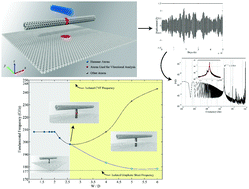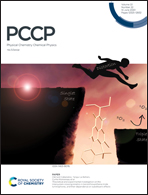The effects of van der Waals interactions on the vibrational behavior of single-walled carbon nanotubes using the hammer impact test: a molecular dynamics study
Abstract
The hammer impact test is a conventional modal analysis technique in large-scale structures. It possesses efficient capability in the excitation of any structure within a wide range of frequencies and thus, this technique can be a good method to identify the dynamics of any structure. Here, we have implemented this method on nano-scale structures using molecular dynamics simulations. For convenience, we used a carbon nanotube (CNT) that showed complicated behavior due to van der Waals (vdW) interactions with a graphene sheet. The graphene sheet represents the vdW interactions of the CNT with its surroundings, which is an important distinction between the phenomena at the nano-scale. The variations in the fundamental natural frequency and quality factor of the CNT with different strengths of the vdW interactions are explored. For this purpose, the distance between the CNT and graphene is used as the tuning parameter. The results of the hammer impact tests were compared and matched to those obtained with a well-established method in the nano-scale that involved thermomechanical noise. Having the natural frequencies of CNT and graphene sheet at their isolated state, it can be noted that the vdW effects bring both the structures into a common intermediary natural frequency when they are close enough. Increasing the distance between CNT and graphene, after passing a certain limit, the structures tend to have their natural frequencies in their isolated states. Up to this certain limit, the fundamental frequency of the graphene sheet is completely equal to that of the CNT. This shows a full coupling of the two structures at closer distances, which transforms into decoupling at higher distances. The frequencies corresponding to the two structures deviate in a way that the CNT vibrates faster than the graphene sheet. At far enough distances, the natural frequencies meet the values of the isolated states of the structures. As an aside, the quality factor of the CNT shows an inverse relation with the fundamental frequencies. These results can be used in the design of novel experimental procedures for the evaluation of the vibrational properties of nanostructures.



 Please wait while we load your content...
Please wait while we load your content...